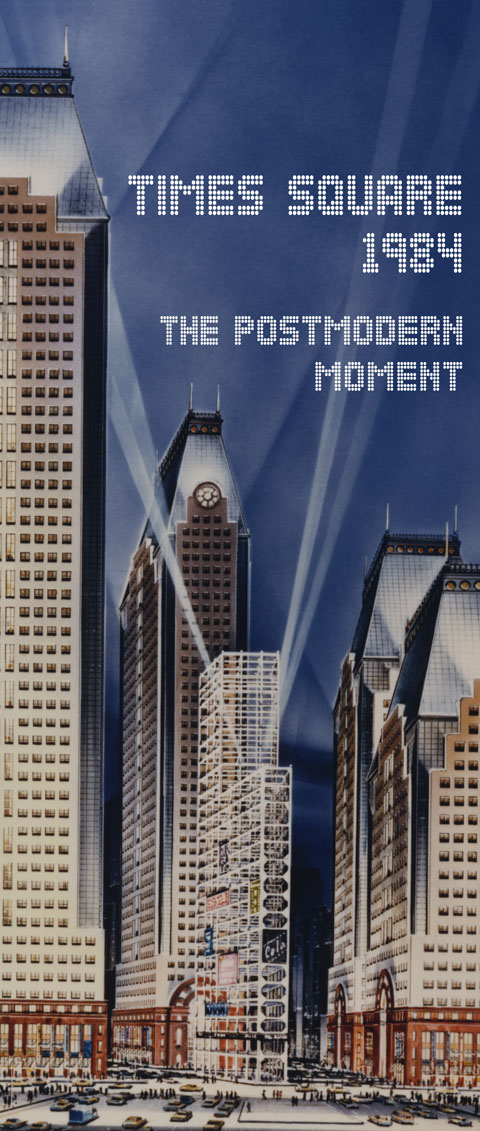The Skyscraper Museum is devoted to the study of high-rise building, past, present, and future. The Museum explores tall buildings as objects of design, products of technology, sites of construction, investments in real estate, and places of work and residence. This site will look better in a browser that supports web standards, but it is accessible to any browser or Internet device.

Image: The Skyscraper Museum.
Rendering by Patrick Lopez.
Times Square today is bright and crowded - a tourist mecca, entertainment district, retail powerhouse, and pedestrianized precinct that matches in vitality any decade of its storied past. But thirty years ago, the future of Times Square was in limbo, caught between a series of false starts at clean-slate urban renewal by the City and State and an emerging philosophy of urbanism that favored history, preservationist values, electric signs and semiotics, and delirious diversity.
In 1984, in particular, the past and the future of Times Square collided at a pivotal moment when proposals to build a matched set of four mega-skyscrapers on the corner sites of the crossing of Broadway, Seventh Avenue, and 42nd Street elicited howls of protest. City-supported plans even called for the demolition of the 1904 Times Tower, which had given its name to the district.
Other community-organizing efforts by the Municipal Art Society, architects, and diverse advocates altered the trajectory of establishment plans, both for Times Square and the new zoning regulations put in place to incentivize high-rise development in West Midtown. Preserving the historic theaters, maintaining the bright lights of Broadway, and protecting the openness of the area's central "bowl of light" by employing setbacks at street level and mandated acres of colorful electric signage were goals achieved by widespread civic engagement.
With its costumed corporate towers and high-rise hotels, Times Square today - though constructed from the late 1990s - had its genetic code written in the 1980s.
THE TIMES TOWER
This introduction to the exhibition establishes the early importance of the Times Tower as a gathering place and news machine.
The first photograph, from the Library of Congress, shows a crowd gathered outside the Times Tower to read the "zipper" headlines on June 6th, 1944, as D-Day forces landed in Normandy. The circling headline continued in lights a long tradition in the city of newspapers distributing breaking headlines to the public.
The short film that follows, "Panorama from Times Building, New York," is a copy of a 1905 American Mutoscope recreated by The Library of Congress from a "paper positive" in its collection after the negative had deteriorated. It is a slow, 360-degree pan taken from the roof of the Times Tower and reveals the surrounding city, almost completely developed with buildings, though principally low-rise, which emphasizes the Tower's impressive height.